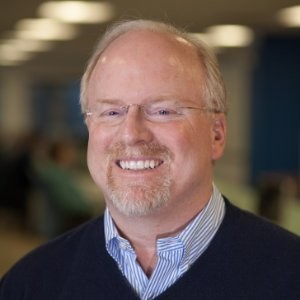Cloud Computing
Thought Leaders in Cloud Computing: John McEleney, Head of Strategy, PTC (Part 5)
Sramana Mitra: My short experience with CAD in the early 2000’s timeframe was that mechanical design is one of the highest exit barrier industries. People don’t want to get out of the system. It makes innovation very difficult.
John McEleney: We had a slide deck that said what’s happening in our industry. Over the last 20 years, not a lot.
>>>Thought Leaders in Cloud Computing: John McEleney, Head of Strategy, PTC (Part 4)
Sramana Mitra: What happens to the core CAD? Does that still remain mostly or generally an on-premise desktop-based system?
John McEleney: For companies that have an install-base type of systems, the CAD geometric data is typically stored in a vault. They’re not necessarily moving it out of the vault to a different system.
>>>Thought Leaders in Cloud Computing: John McEleney, Head of Strategy, PTC (Part 3)
John McEleney: One of the best things about a SaaS solution is that it’s very easy to get multiple people and locations to get onboard. The strategy with respect to Creo is to continue to improve the core base and then embrace and extend it with other cloud-related applications and functionalities.
We’re not forklifting everybody to our cloud offering. That being said if customers are leaning in, we also are not saying, “You have to stay with your legacy product.” There are many large customers that are going through the early evaluation process. They’re using Onshape as a glue to connect customers.
>>>Thought Leaders in Cloud Computing: John McEleney, Head of Strategy, PTC (Part 2)
John McEleney: When PTC acquired Computervision in early 2000s, they stumbled upon a company called Windshield Technologies that Computervision had invested in and ultimately acquired. Windshield was based out of Minnesota and founded by Jim Heppelmann. It was the first cloud-based PLM system. The idea behind it is that you can manage data with links and allow the information to be managed in a much easier system.
>>>Thought Leaders in Cloud Computing: John McEleney, Head of Strategy, PTC (Part 1)

We discuss the Mechanical Design industry’s transition to the cloud.
Sramana Mitra: Let’s start by introducing our audience to your background as well as PTC’s work in cloud computing.
John McEleney: I have been in the design and technology software space for the better part of almost 40 years. It started when I had an internship as a mechanical engineer at the Laboratory for Laser Energetics at the University of Rochester.
>>>Cloud Stocks: What Can Cloud Startups Do To Raise Seed Capital in 2021?

In general, Bootstrap First, Raise Money Later is the best strategy. You need to be ready to raise money.
If you decide to raise money, I strongly suggest you read the 1Mby1M Seed Capital series of interviews on our blog ASAP. We’ve profiled investor after investor to understand their investment thesis. You need to get in their heads and get a sense of what they’re looking for, especially if you’ve never raised money before.
Remember, Investors are looking to multiply the money that they put into startups.
>>>Thought Leaders in Cloud Computing: Prem Jain and Soni Jiandani, Co-Founders of Pensando Systems (Part 6)
Sramana Mitra: Tell me a bit about where are the open problems that you are not working on but there could be other entrepreneurs with unique expertise who can solve the problems you are seeing.
You probably have a hundred ideas that come to you. You have chosen to work on Pensando, but there are probably many other ideas that deserve somebody working on it. What are some of those?
>>>Thought Leaders in Cloud Computing: Prem Jain and Soni Jiandani, Co-Founders of Pensando Systems (Part 5)
Sramana Mitra: When you talk about autonomous vehicles as a use case, the processing is happening on the vehicle-specific manner in a central unit, or is the actual processing happening at the vehicle?
Soni Jiandani: Let’s talk about companies like Fedex. Let’s even talk about the healthcare industry. It’s unfortunate we are dealing with COVID in our own ways.
>>>